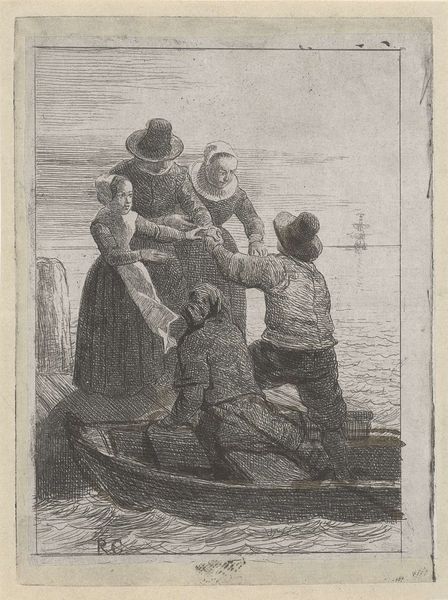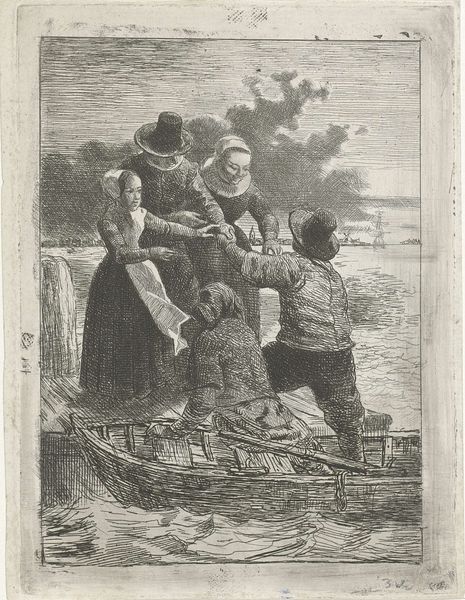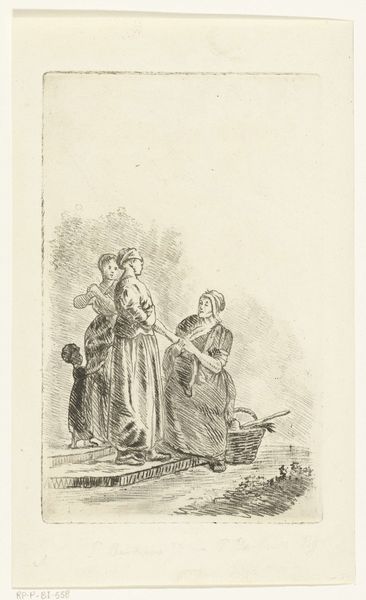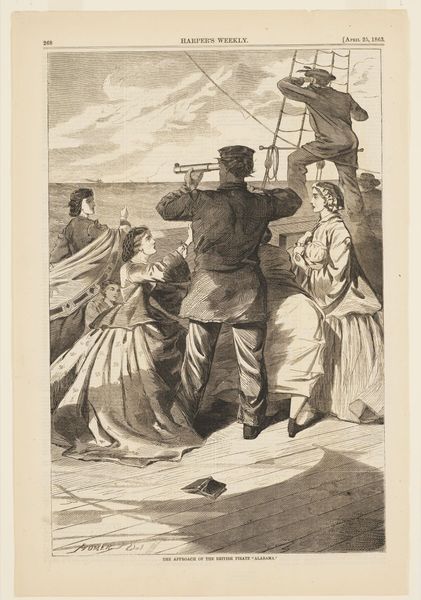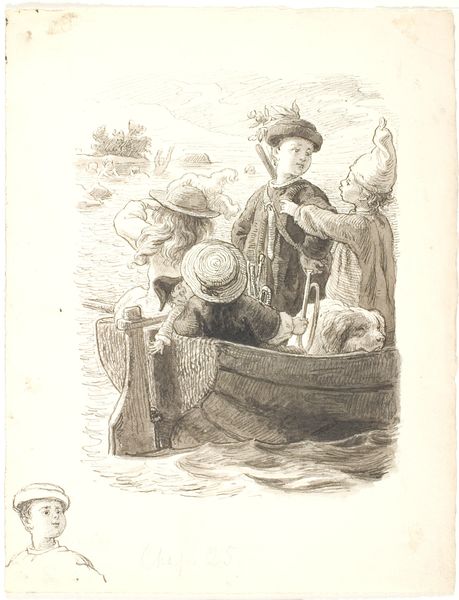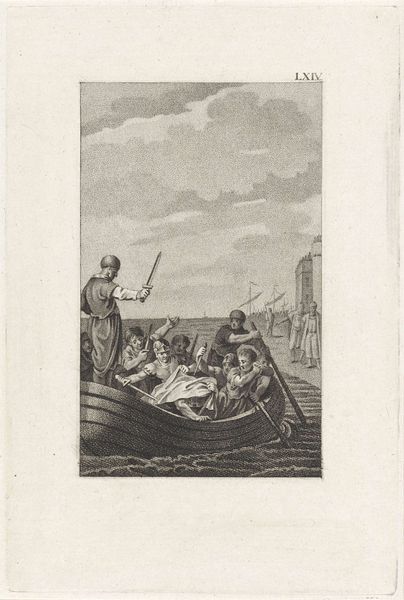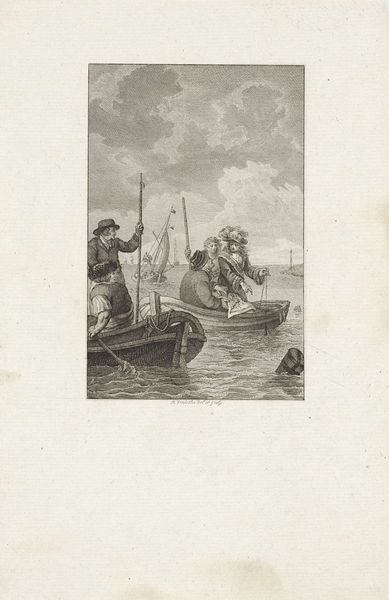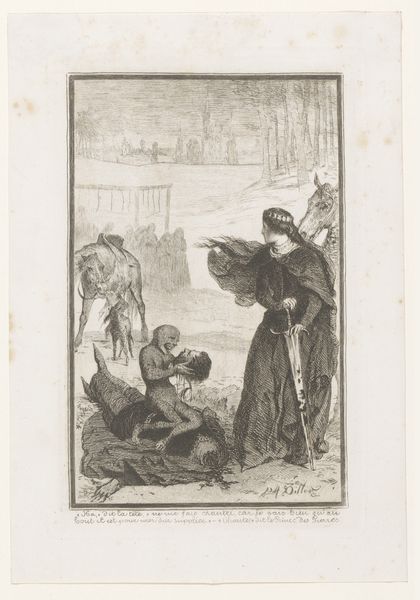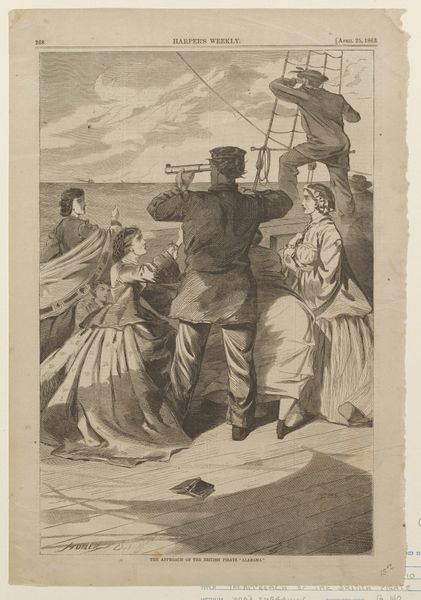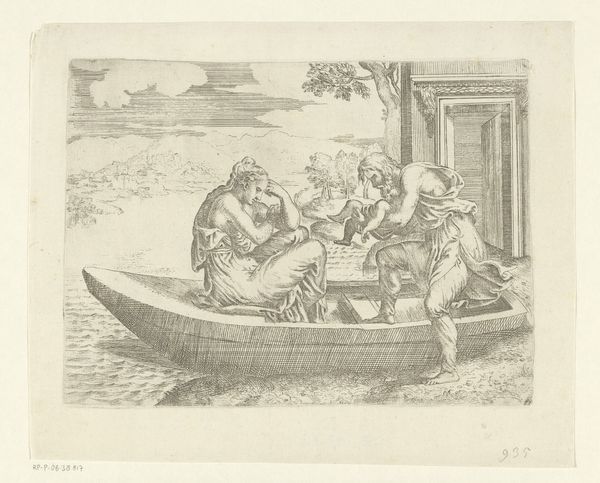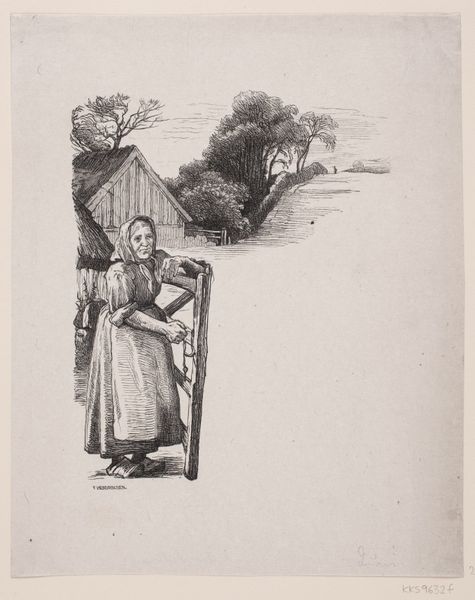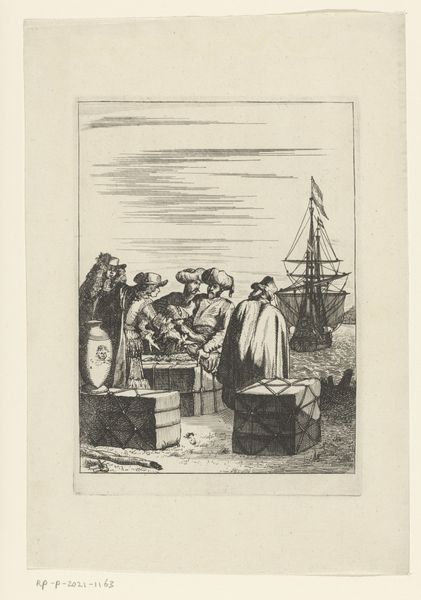
print, engraving
#
narrative-art
#
dutch-golden-age
# print
#
pencil sketch
#
old engraving style
#
figuration
#
line
#
genre-painting
#
engraving
#
realism
Dimensions: width 114 mm, height 153 mm
Copyright: Rijks Museum: Open Domain
Editor: So, this is Reinier Craeyvanger’s "Inscheping," dating from somewhere between 1822 and 1880. It’s an engraving, giving it this beautifully detailed, almost photorealistic quality despite being black and white. There’s this poignant sense of farewell, of a family sending someone off, maybe to sea? What jumps out at you? Curator: What strikes me immediately is the interplay between the public and private spheres within the imagery itself. This "departure" – *Inscheping* – signifies more than just a physical act. How does the work tap into the visual culture around Dutch maritime power? The ship on the horizon certainly reinforces this reading. Editor: So, the departure isn't just personal; it speaks to a broader cultural narrative about the Netherlands and its relationship with the sea. Can you say more about that? Curator: Consider the engraving's probable audience. Prints like these were relatively accessible, circulating widely. This artwork taps into Dutch maritime pride and economic strength and might romanticize these dangerous ventures. Does the emotional moment we observe here risk romanticizing it for broader social consumption? Editor: That's fascinating! The almost genre-painting feel had me thinking about this intimate, domestic moment of saying goodbye. But you're suggesting that, because it was a widely distributed image, the "intimacy" is actually carefully constructed for a specific social function. Curator: Precisely. Furthermore, note the contrast in clothing and demeanor between the group on the dock and the individual on the boat. How might this highlight differences in societal roles and reinforce class structures? Editor: That really makes me rethink the narrative here. It’s not just a simple goodbye; it's a glimpse into how Dutch society saw itself and how it wanted to be seen in connection to its maritime empire. Thanks, this opened a new view on the role art plays in society. Curator: Indeed. Art often serves as a powerful instrument in shaping public perception. It’s a valuable reminder that images are never neutral.
Comments
No comments
Be the first to comment and join the conversation on the ultimate creative platform.
